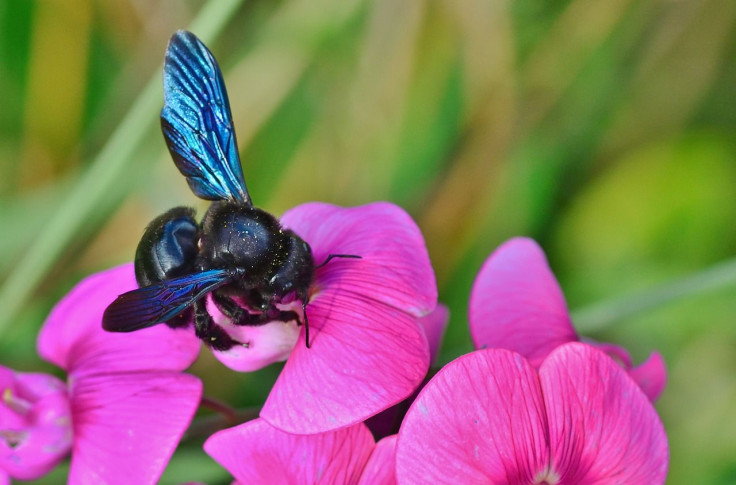Scientists Find Extremely Rare Blue Bee; Thought To Be Already Extinct
KEY POINTS
- Scientists rediscovered an extremely rare blue bee, which they thought was already extinct
- The bee was holding on to a calamint flower when they found it
- The bee is believed to thrive only in the Lake Wales Ridge region of Central Florida
Chase Kimmel, a postdoctoral researcher at the Florida Museum of Natural History, and his team were shocked to find the extremely rare blue bee, believed to have been extinct, on March 9. Scientists say that the last time they saw this rare bee was in 2016.
Unusual And Unique
Kimmel said they observed the shiny little blue bee holding on to an Ashe’s calamint flower while rubbing its head two to three times on the bud. “That behavior is unusual and a unique characteristic of the blue Calamintha bee: 'We were pretty shocked to see it,” Kimmel told the Naples Daily News.
The bee, which is also known by its scientific name Osmia calaminthae, is easily recognizable because of its unusual facial hair that the insect uses to collect pollen. It is particularly rare because aside from using its facial hair to collect pollen, it hugely depends on the pollen of another endangered species, a blooming flower called Ashe’s calamint.

Highly Specialized Bee
A lot of rare bees have been spotted during the lockdown period, but further research has been affected because of the coronavirus pandemic. As for the rare blue bee, Jaret Daniels, the director of the McGuire Center for Lepidoptera and Biodiversity at the Florida Museum of Natural History and the advisor of Kimmel, said that it is a localized and highly specialized bee.
Daniels revealed that the flight season of the bee happens from around mid-March up until the early days of May. This is often the best time to study live insects and find out its range. Unfortunately, travel restrictions have been imposed during this period, making it hard for scientists to conduct any study about the bee.
The McGuire Center director also said that the flight time of this type of bee is very limited. Daniels commended Kimmel and his team for their fantastic job, adding that they are getting lots of great data. “if it wasn’t for the COVID-19 virus we would have had more people in the field, so it has definitely scaled back what we’re able to do,” Daniels noted.
A Biodiversity Hotspot
The museum released a statement about the discovery and also revealed that the bee is believed to thrive only in the Lake Wales Ridge region of Central Florida. The region, according to the Fish and Wildlife Service report in 2015, is “a globally recognized biodiversity hotspot and one of the nation’s fastest-disappearing ecosystems.” Today, only a few patches of pine scrubs grow within the orange groves along U.S. Route 27, the museum said in a statement.
#Top10PublicUF #Florida #AAUMember #TheEverythingSchool #UF https://t.co/SVXC1fem9Q
— AllThingsUF (@AllThingsUF) May 12, 2020
© Copyright IBTimes 2024. All rights reserved.





















